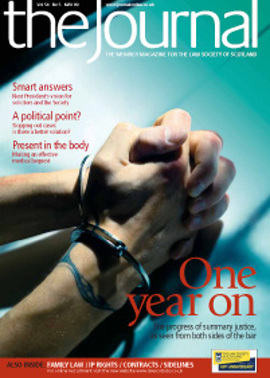Selection, the professional way

On 25 February 2009, David Lammy MP launched the “Professional Recruitment Guide”. The launch of the guide coincides with the New Opportunities white paper and the creation of a panel to identify obstacles to accessing the professions, as well as propose actions which will widen participation. The panel is chaired by Alan Milburn and will work closely with representatives of the professions. The aim of the panel is to identify the options that the professions, working with Government, could take to improve access.
The idea for of the Professional Recruitment Guide can be found in Sir Alan Langlands’ The Gateway to the Professions report (2005), which considered how the professions could sustain and improve recruitment opportunities for graduates before the Government’s introduction in 2006 of variable fees in university courses in England & Wales. The report concluded that the introduction of fees should have no effect on university entrance, although it might impact on diversity in recruitment to the professions.
In 2008 the Department for Innovation, Universities & Skills (DIUS) commissioned PARN, the Professional Associations Research Network (see panel) to research and identify interesting and innovative employer recruitment practices that widened access to new graduates entering the professional labour market. The research output was to provide guidance to employers, for implementing diversity into their recruitment processes.
Studying good practice
PARN interviewed recruitment staff from nine small, medium and large employers. These were: ACube Architects; Doughty Chambers (barristers); Filton Avenue Junior School; GlaxoSmithKline; an inner-city medical practice; Penna Recruitment Agency; Pinsent Masons LLP; PriceWaterhouse
Coopers; and New Siblands Special School. It emerged from these interviews that the recruitment processes extended beyond the traditional notion of vacancy to job offer. People recognised that there is no point in focusing only on the recruitment process, considering this will miss candidates who do not even apply, or employees who vote with their feet because they feel unwelcome or their needs go unmet.
Many of these employers were actively engaging with negative stereotypes of their professions and the employees who work in them. Some of this, they believed, could be addressed through community outreach programmes and initiatives that provided students of all ages with concise information and positive role models. The results have been encouraging, although all agree more work is needed.
With applications and recruitment rates for the six diversity strands – gender, black and multiethnic, religion, sexual orientation, disabilities, and age – apparently on the increase, the case study employers demonstrated a desire to make the workplace more inclusive and welcoming to all. PriceWaterhouseCoopers used bias training as a tool for making employees aware of the effect of their individual practices and actions on others. It was felt that failing to tackle an inharmonious working environment resulted in reduced productivity levels and low retention rates.
Increased re-recruitment costs and reduced productivity levels were a concern for employers, and this transmitted into their specific recruitment activities.
Yet these employers also believed they would gain a competitive advantage from the multitude of differing perspectives emanating from a more diverse workforce. Where clients are likely to be diverse, employers thought their organisations should reflect this; and they have profited from such moves.
Practising what they preach
The research identified many other interesting and innovative practices, which are included in the Professional Recruitment Guide. These are contained as case studies.
Doughty Street Chambers, for example, consists of independent barristers who aim to provide outstanding, accessible and sensitive services to a broad range of clients in accordance with their commitment to the promotion of human rights and civil liberties. Their fundamental ethos is reflected in their recruitment process. All applicants, regardless of their background, are considered as long as they meet the core principles: a fundamental commitment to human rights; and a demand for excellence in all services to clients.
These two principles inform the business case for diversity. A less diverse workforce, the Chambers argues, would narrow opportunity. High calibre applicants from diverse backgrounds are attracted, which reflects the diverse needs of their clients.
Besides the case studies, the Professional Recruitment Guide also features recruitment tips, hints, signposts and a section on how to get started. The guide is designed to allow employers to dip in and out or to read extensively. It offers employers a variety of tools that they can tailor to their own specific needs.
For more information on the Guide go to: www.dius.gov.uk/higher_education/widening_participation/professional_recruitment_guide .
What is PARN?
PARN, the Professional Association Research Network, is a not-for-profit membership organisation for professional associations and their regulatory bodies. The Law Society of Scotland is one of its 147 current members in the UK, the Republic of Ireland, Canada, Australia and Kenya. PARN was set up with the mission “To increase the profile of issues relating to professionals, professionalism and professional bodies through research and networking with the aim of determining and promoting professional good practice”.
For more information go to www.parnglobal.com
What’s in the paper?
Visiting the web page introducing the guide (see last paragraph of article text), you find six main options:
- Background: More information on the recruitment challenges employers face and how this guide helps meet them;
- Recruitment step by step: Practical tips on everything from defining the job to selecting and appointing candidates;
- Legal issues: Links to key employment legislation plus explanations of essential issues;
- Latest trends: Catch up on moves towards flexible working, a better work/life balance and staff training;
- More resources: Websites and organisations that can help develop your recruitment strategies; and
- Business Link: Pactical help and support for small, medium and large businesses
Each then has various further options covering all aspects of current employment issues.
In this issue
- Obama's first 100 days
- Playing politics with the Scottish constitution
- Beneficiaries are suffering from the high cost of advice
- Ever forwards
- Shared principles
- A year of debate
- Ask the audience
- Property sales continue to fall
- Where fact makes law
- Giving up the body
- Playing politics with the constitution
- Matrix evolutions
- Make it happen
- View from the top
- Retiring thoughts
- Law reform update
- Phone a friend
- Lighting the way
- Is Big Brother watching too closely?
- Ask Ash
- Selection, the professional way
- A claims pandemic?
- Bumper crop
- A place in the sun?
- Equality redefined
- Taking diligence forward
- Scottish Solicitors' Discipline Tribunal
- Book reviews
- Website review






